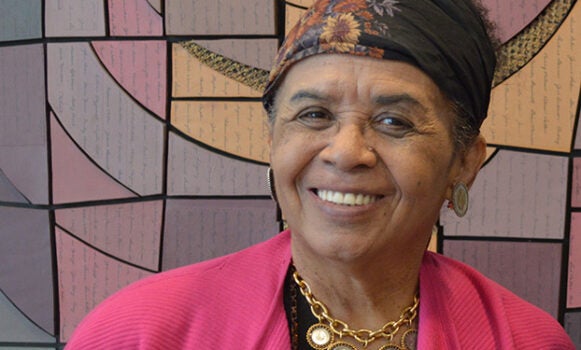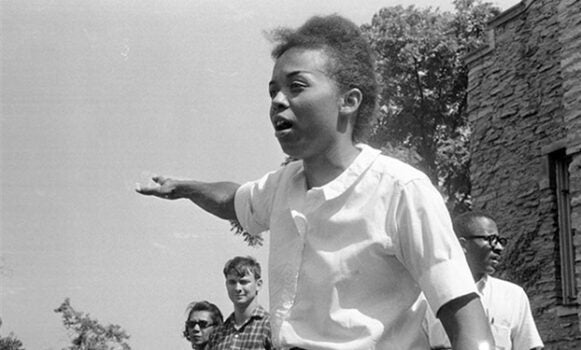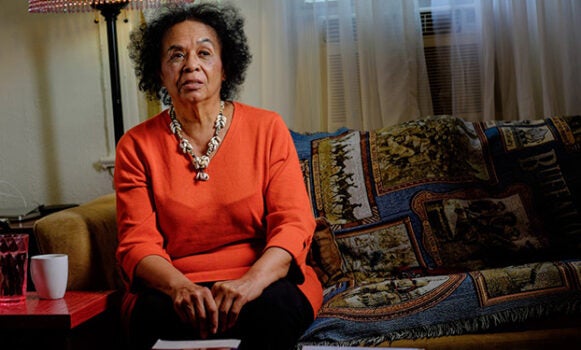Ladner remembered as ‘giant in the civil rights movement’
Published 5:08 pm Tuesday, March 12, 2024
|
Getting your Trinity Audio player ready...
|
NATCHEZ -– Dorie Ann Ladner, who fought for civil rights and voter registration in Natchez, has died, her sister, Joyce Ladner, announced on Tuesday. Dorie Ladner was 81.
“My beloved sister, Dorie Ladner, died peacefully on Monday, March 11, 2024. She will always be my big sister who fought tenaciously for the underdog and the dispossessed. She left a profound legacy of service,” Joyce Ladner shared in a Facebook post.
Dorie Ladner is remembered as a giant in the civil rights movement who worked closely with such leaders as Bill Ware, George Greene, and George Metcalfe, among others.
Ser Seshsh Ab Heter-Clifford M. Boxley, who knew Dorie Ladner personally, said it was interesting that she died on Monday, one day before the polls opened Tuesday on primary election day in Natchez.
In a Facebook post shared Tuesday, Boxley said he “brought her back to Natchez to tell her story and free her spirit from all the pent-up stress generated when she did outstanding community organizing for [the] SNCC Voters Project.”
‘A good job done’
Boxley wrote that she had not returned to Natchez since leaving “after having plowed the grounds for voters’ civil rights and a good job done.”
Boxley said he brought Dorie Ladner, and the Rev. Al Sampson of Chicago of the Southern Christian Leadership Conference, to Natchez in 2015 for the 50th anniversary of the modern civil rights movement in Natchez as part of his annual Black and Blue Civil War Living History program. The guests spoke at Jefferson College.
Dorie Ladner was one of the first workers to come to Natchez to get people to vote, said Bobby Dennis, executive director of the NAPAC museum. “That was the beginning of the time when we had a heightened length of Ku Klux Klan activity here in Natchez,” he said.
Dennis said that when Dorie Ladner returned to Natchez as part of Boxley’s program, she visited the NAPAC museum.
Dennis pointed to the film, “Black Natchez” (1967), which presents a documentary of the Natchez movement. He noted that Dorie Ladner is shown approaching activist Bill Ware as he stood on top of a car in front of the NAACP Headquarters. She rushed to him and beckoned for his attention. When he knelt to hear her, she said, “The mayor rejected all of the demands.”
In addition to fellow activists, Dorie Ladner’s work has been praised by scholars, historians, and government leaders. The Mississippi Humanities Council described her as “a giant in the civil rights movement.”
“Dorie Ladner was a vital part of the grassroots effort to change Mississippi and America,” said Dr. Stuart Rockoff, executive director of the Mississippi Humanities Council. “A native of the small community of Palmer’s Crossing, she took her experience in the Mississippi movement to become a national leader in the effort for civil rights. The Mississippi Humanities Councils looks forward to honoring the life and legacy of Ms. Ladner and her sister Joyce with a new Freedom Trail Marker to be dedicated in their hometown on May 4th.”
Metcalfe Boarding House
Dorie Ladner was a member of the Student Nonviolent Coordinating Committee (SNCC).
In 1964, during Freedom Summer, she was one of several women who stayed at the Dr. John Banks House at 9 St. Catherine St. At the time, the house served as the headquarters for the Natchez Branch of the NAACP. It was also home to NAACP President George Metcalfe, who lived on the first floor.
The civil rights workers called the residence “Metcalfe Boarding House.” They stayed at the house following the bombing of Freedom House #1 at 611 S. Wall St., according to Boxley.
John Dittmer wrote about the bombing in his book, “Local People: The Struggle for Civil Rights in Mississippi” (University of Illinois Press, 1995):
“In the late summer of 1964, when SNCC organizers Dorie Ladner, Chuck McDew, and Charles Neblett inaugurated COFO’s first project in Adams County, a bomb destroyed the building next to the house where the SNCC workers were staying. Chief of Police J.T. Robinson told Ladner that the ‘bomb was meant for you. I’m surprised you haven’t been killed already.’”
Other women who stayed at Metcalfe Boarding House included Janet Jemmott, who would later marry the respected civil rights leader, Bob Moses; and Annie Pearl Avery, who sometimes guarded the house using her .22 pistol, according to SNCC.
Her later years
During Dorie Ladner’s later years, she struggled as her health began to deteriorate. A few weeks before her passing, her daughter, Yodit Churnet, opened a GoFundMe page for her mother.
“Dorie Ladner is at a critical time of her life and is in urgent need of home healthcare assistance,” she wrote. “She suffered a stroke and was struck with cancer and underwent a mastectomy. She is also suffering from debilitating back problems such as arthritis and spinal stenosis (surgery in October 2023) and is still in recovery.”
Churnet noted her mother joined the movement while still a teenager and continued to work for human and civil rights for more than 60 years.
“America is a much more democratic society because of the sacrifices made by Dorie to end racial segregation,” she wrote. “Millions of African Americans throughout the South are now able to vote and participate in determining the direction of America because of her contributions.”









